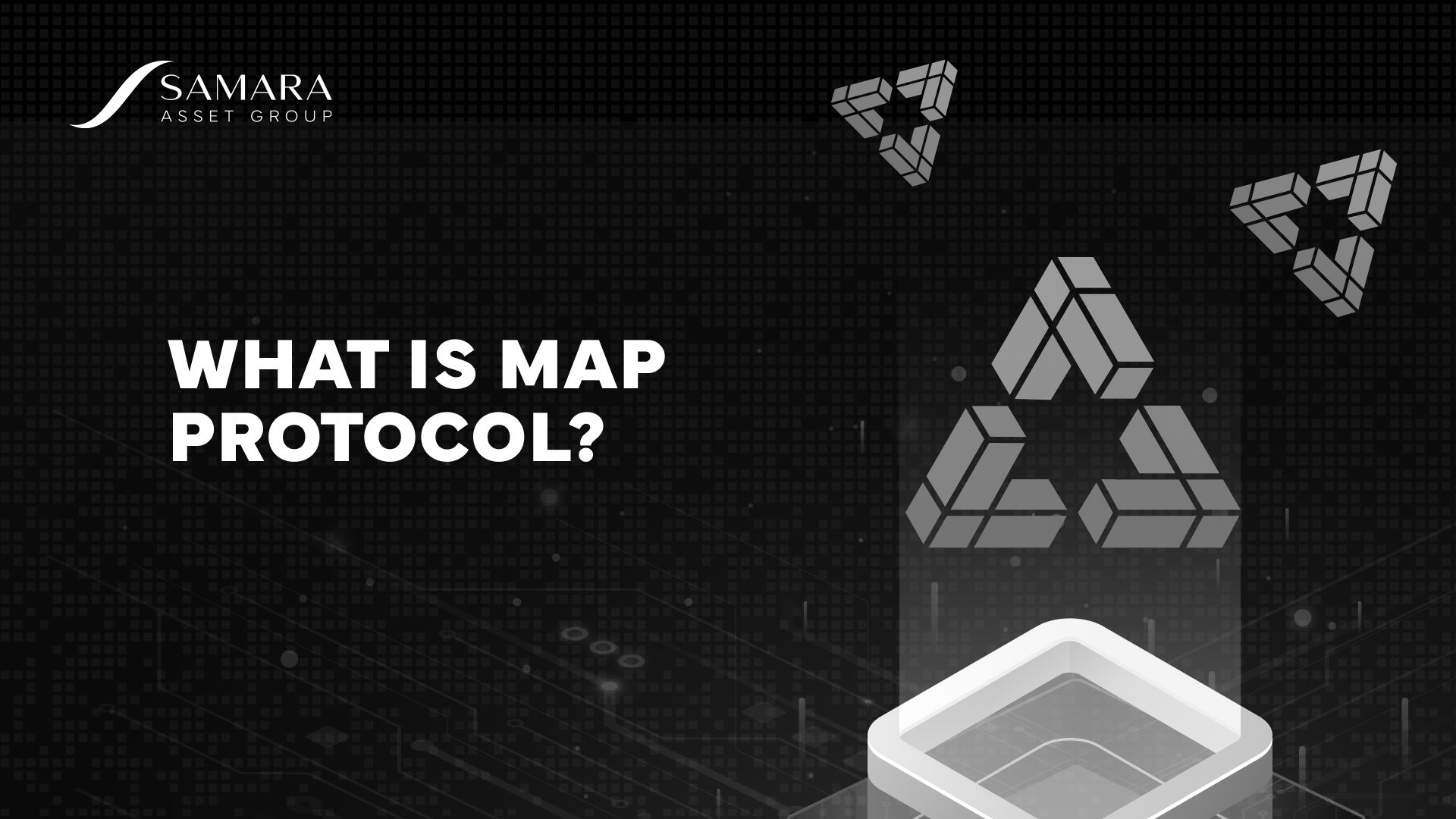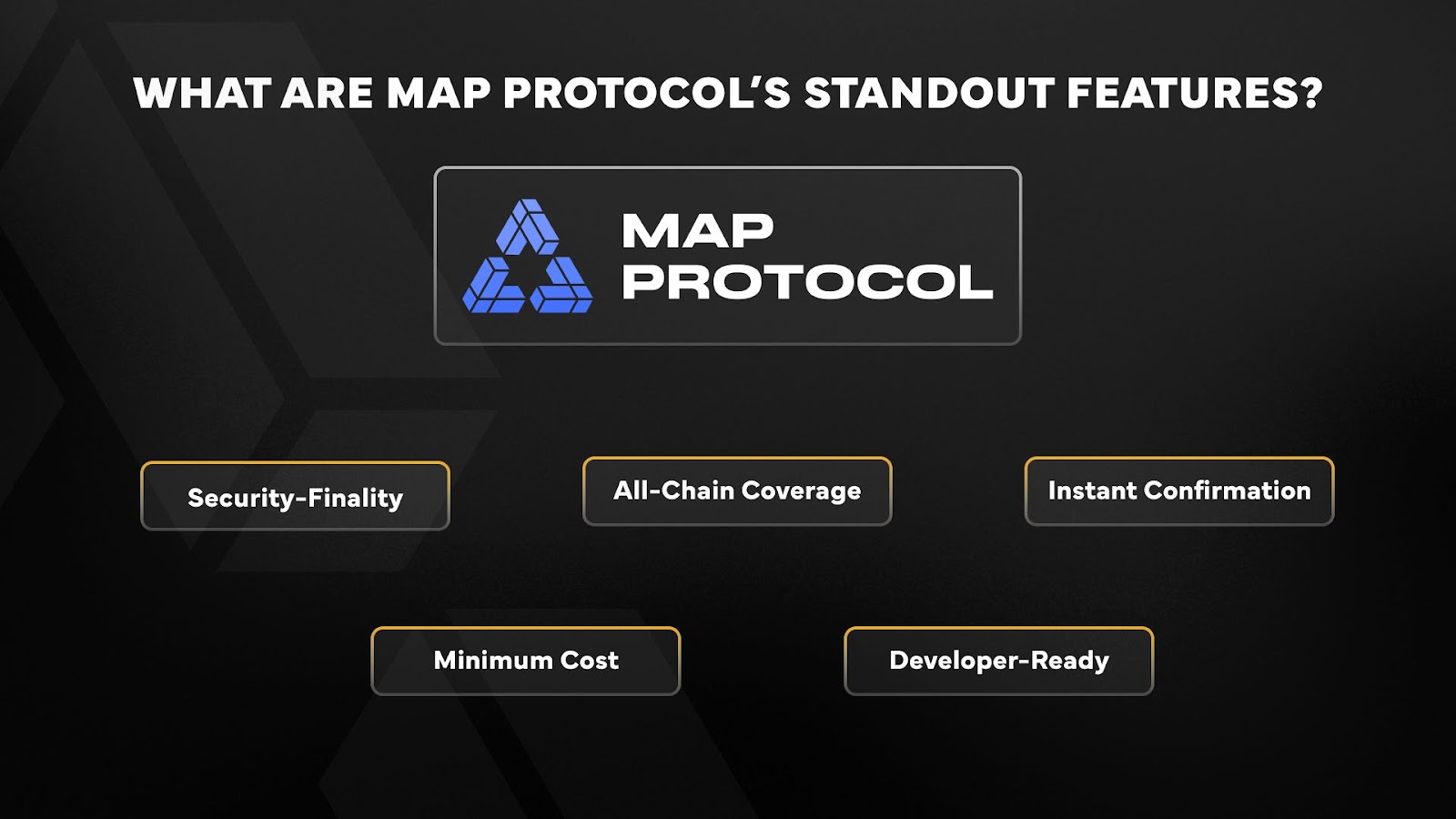Bitcoin
Bitcoin CPI
Venture Portfolio
Funds
Market Insights
Indicators
About
Contact

December 30, 2024





MAP Protocol is one of many new projects within the Bitcoin Layer 2 ecosystem. Its objective is to address issues around blockchain interoperability and the perceived shortcomings of traditional blockchain bridges.
Read on to discover what Map Protocol is, how it works, and how it aims to power efficient cross-chain interoperability.
MAP Protocol is a Bitcoin Layer 2 protocol that provides a peer-to-peer omnichain infrastructure built on ZK-LightClient technology to enable peer-to-peer interoperability between blockchain networks while prioritizing decentralization and trustlessness.
Although solutions exist for cross-chain interoperability, one of the biggest issues is their reliance on third-party roles when flagging down issues such as double-spending.
This deviates from Bitcoin’s core tenets of trustlessness and decentralization, which MAP Protocol aims to maintain.
In its objective of enabling blockchain interoperability in a trustless and decentralized way, MAP Protocol uses several key features.
Light clients are a technology for interacting with a blockchain, including verifying its transactions in a more accessible manner while using fewer resources.
For MAP Protocol, this means a smart contract could deploy a light client version of the origin chain to the target chain. At the same time, this smart contract is also used to verify the validity of the data being transmitted. The status and veracity of the contract are both checked and maintained by a group of cross-chain message role maintainers.
ZK proofs are a cryptographic method for confirming the content or data of a statement without disclosing the statement or the content/data it contains, thanks to a series of quick inquiries and answers.
The technology has been widely adopted across entities that want to maintain privacy while improving verification speed and cutting down on gas costs.
By combining ZK proofs and light clients, the two help verify the BLS aggregate signature hash value of the origin chain and after that, the light client smart contract verifies the Merkle proof and re-verifies the ZK proof. As a result, a fully peer-to-peer network achieves consistency, stability, and code trust while eliminating the need for third-party interference.

Combining different technological solutions allows MAP Protocol to provide the following features highlighted below.
On MAP Protocol, every public blockchain being connected through its infrastructure gets an independent, self-verification network consisting of light clients. The network works quickly and uses MAP Protocol’s ZK-LightClient technology to validate transactions, compare the light client to the mainnet, and ensure they correspond before activating finality.
All public chains can be interconnected through MAP Protocol. This is achieved via an algorithmic relay chain that harmonizes any data-heterogeneous blockchain (a chain that can handle data that’s in any format and from any source).
Remember, different chains operate on different algorithms and use various data formats. Attaining interoperability between them allows the MAP Relay Chain to achieve data homogeneity. This data can then be accessed and read from different chains.
Smart contracts communicate quickly and effectively across different chains, while between the chains, communication is enabled through a Messenger, an independent inter-chain program. This program listens to relevant events, builds a proof on the source ledger, then transmits the message to the target chain. This makes the procedure a high-concurrency inter-chain program, which means that theoretically, just one honest Messenger can transfer all cross-chain transactional messages across the dApp.
ZK proof is a cheap alternative to full verification. On the other hand, running light clients is also significantly cheaper than running full nodes. Thus, MAP Protocol only charges gas fees for their MAP Relay Chain and other related chains, with no additional costs.
With the MAP Omnichain Service (MOS) deployed on and between public chains, developers can already set entry thresholds, incentive models, etc., by sharing the liquidity of MOS's Vaults on different chains. In other words, the protocol is largely ready to launch with just a few chain-specific tweaks.
MAP Protocol is an omnichain layer; hence its objective is connecting different blockchains and facilitating smooth, trustless, and decentralized cross-chain interoperability.
In that sense, the protocol doesn’t necessarily allow building on itself. Rather, it’s a way for developers across different chains to integrate these solutions within their dApps.
In other words, MAP Protocol offers the tools for developers to build cross-chain interoperable dApps based on this protocol by immediately including their developer-ready MOS into the dApps they’re building.
This lets developers plan beyond the ecosystem they’re inhabiting first by opening up the possibility of a varied blockchain approach or even potentially blockchain-agnostic dApp development.
A significant issue in the blockchain space is that most chains operate in isolation. Both developers and users are forced to adapt to either one chain or use cross-chain solutions that require trust and are somewhat centralized.
MAP Protocol aims to solve these issues by implementing light clients and ZK proofs for speed, security, and low gas fees while remaining decentralized and trustless. Its omnichain foundation means it can be implemented into any blockchain, regardless of its EVM-compatibility, and transform all relevant data into formats readable by any other blockchain.
While it’s a separate layer in a technical sense, MAP Protocol essentially operates as a layer connecting all others. It will be interesting to see what role MAP Protocol will play for interoperability in the Bitcoin and broader crypto ecosystem.
The MAP Protocol is a Bitcoin Layer 2 that enables cross-chain communication between any two blockchains in a way that remains decentralized, secure, fast, and low in fees. Its purpose is to be able to connect any two chains, regardless of their compatibility or differences. This will enable seamless swapping and inter-chain communications that are fast, secure, and cheap.
MAP Protocol uses ZK proofs and light clients as its basis. Zk proofs mean that transactions are verified without revealing their contents, which ensures privacy is maintained. Light clients let users interact with blockchains in a more efficient and resource-friendly manner. Validity checks are employed every step of the way, and groups of users compare the light clients to the mainnet to ensure everything remains in sync.
MAP Protocol allows the transferring of any type of asset. This includes tokens and coins, but also decentralized derivatives, synthetic assets, and communication data, to name a few. In other words, MAP Protocol’s relay chain can homogenize all data that is transferred from one chain to another while ensuring all data is complete and unchanged.
Traditional blockchain bridges rely on assumptions of trust, as they act like intermediaries or third parties. This also goes against the idea of full decentralization, as one party is responsible for ensuring that everything runs smoothly, and a single-point failure can bring everything down. MAP Protocol eliminates these issues by simply offering the tools for implementing interoperability on a basic level into chains, dApps, etc., without the presumption of trust.
Theoretically, all sorts of blockchains could be compatible with the MAP Protocol. This includes both EVM-compatible and non-EVM-compatible blockchains, as the protocol is built to homogenize all data it receives and offer it in a universally readable format for any other blockchain.